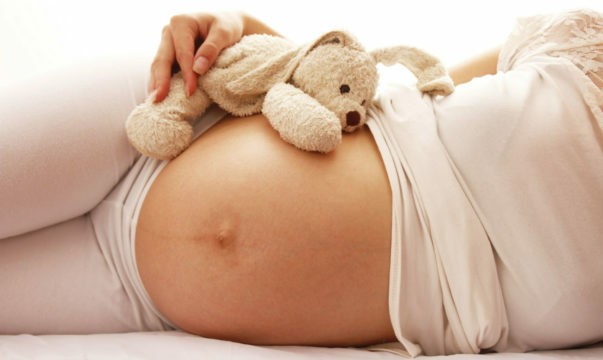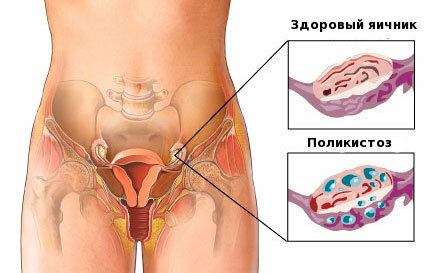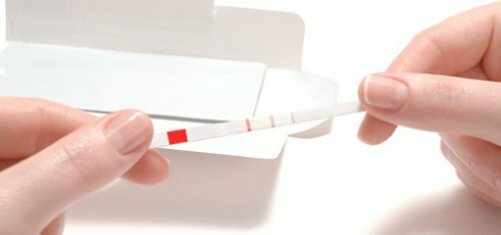Ovarian cyst is not a terrible sentence for a woman. Among all benign neoplasms, the cyst occupies the largest percentage of cases. In medical practice, the outcome of timely treatment is quite favorable.
Causes of
Causes of cyst formation on the ovary can be different factors.
- This includes hormonal imbalance associated with the use of contraceptives, hormonal drugs or an incorrect lifestyle. Contraceptives based on hormones are not dangerous to women if they are prescribed by a doctor and are not a means of self-medication.
- Another reason is that previous surgical interventions have been carried out, possibly also to remove neoplasms. Relapses in this case also occur.
For the rest of the reasons are:
- promiscuous sex life,
- endocrine system diseases,
- have chronic diseases of organ systems that interfere with normal hormonal background.
Influence on pregnancy
The formation of a cyst that does not resolve with medication or with the onset of the next menstruation, changes a lot in the work of the reproductive organs and hormonal background. First of all, the follicular cyst significantly affects the level of hormones in the blood and when ovulation occurs. Sometimes it is the cyst that causes ovulation not to occur, since the place of the follicle is occupied by the neoplasm.
In addition, the neoplasm can press on neighboring organs, preventing their functioning. If there is a thin ligament between her and the ovary, the ovary's foot can torsion, respectively, no one can talk about ovulation.
Treatment of
First and foremost, it is necessary to identify the nature of the neoplasm to see if a pregnancy will occur after removal of the ovarian cyst. Some cysts pass independently with the onset of a new cycle - this often happens with follicular cysts. Some really require removal, if after a new cycle they did not resolve, but continue to increase in size.
Treatment can be medicated, implying the administration of drugs for resorption of the cyst or hormonal drugs. Hormonal drugs are taken strictly after the diagnosis and laboratory examination of blood for the concentration of a hormone is carried out.
Surgical removal of
Surgical removal of the cyst is possible with a traditional surgical method with a cut, or laparoscopically using modern equipment and without large incisions. The second method in modern medicine is more preferable. This is due to the fact that he gives the woman less discomfort, injures the body less.
In addition, the body directs all forces to scarring the former ligament between the cyst and the ovary, and less force to heal the wound. In the case of traditional removal, wound healing lasts much longer.
The postoperative period lasts after laparoscopy for several days, whereas after a traditional operation it may take a week or more. Most importantly after the cyst has been removed, how thoroughly the patient is being examined for possible complications.
Probability of pregnancy
The question of whether it is possible to become pregnant in this case, excites many women who have undergone a similar operation. If in the postoperative period necessary examinations were performed and complications were not revealed, then pregnancy after the cyst is quite possible.

In principle, with the normal course of the operation and rapid recovery, the likelihood of conceiving is equated with the likelihood of those women who have never had such diseases.
If complications were found, a rehabilitation period will be required to restore the reproductive function of the pelvic organs.
Possible complications of
The most common complications include the adhesion of the fallopian tubes. Since the ovaries and fallopian tubes are closely interconnected and do not function fully without each other, the fallopian tube depends quite strongly on the condition of the ovary.
If, for example, the cyst is located near the joint of the fallopian tube with the ovary, it is possible to form a spike directly on this site. Spikes obscure the lumen of the fallopian tube, as a result of which the egg can not leave the ovary and remains in the tube.
This is fraught not only because ovulation does not occur, but also because fertilization will occur in the tube itself - it is called an ectopic pregnancy. This state is dangerous for the life of the mother and the future child, therefore it is not considered the norm.
Another common complication is infection. To achieve air sterility in the operating room will not work anyway, because the infections one way or another can penetrate and inflame the mucous membranes.
To prevent these phenomena, immediately after the operation, an antibiotic is prescribed that prevents the development of infection, but treats the intestinal microflora as gently as possible.
After two or three cycles, when it normalizes and the ovary returns to normal, it is entirely possible that the pregnancy is normal and fertilization is complete.
Polycystosis
Typically, this disease is characterized by the presence of multiple cysts on the surface of the ovary. They are formed in place of the follicles. This occurs approximately as follows: during the first half of the cycle, several follicles mature, on average, 7. One of them is designed to become dominant and produce an egg for its further fertilization.

Due to hormonal disorders, malfunctions, and the same causes that cause the formation of an ordinary cyst, maturation of the dominant follicle does not occur.
Eggs begin to mature in all follicles at the same time, and their maturation stops at a certain stage. The follicles are filled with fluid, which is called the total follicular polycystosis. Its cause may even be heredity.
Treatment of
Its treatment can be complicated by the fact that the very removal of such small cysts is not always justified. It can cause more damage to the ovary than to bring benefits. Some neoplasms, both single and multiple, require removal along with the tube, if the lesion touches it. And even in this case, there is hope for recovery and pregnancy.
Treatment, in the first place, prescribes medication. Since the most frequent cause is the lack of estrogen in the body, properly selected hormone therapy can compensate for this deficiency and put in the blood as much hormone as required. Then the ovaries begin to function and the maturation of the egg occurs.
Often, this treatment is enough to restore the function of the ovaries. But the only trouble awaiting women is the possibility that the polycystosis will return.
How to deal with relapse
In case the polycystosis returns, the following decision can be made, and most often it is taken. There is repeated medical therapy aimed at restoring the function of the appendages.
When polycystosis will resolve, begin active work on conception of the baby. Usually relapses appear in a year and a half. During this time, the future mother will have time to bear and give birth to an absolutely healthy baby without any complications.
Conclusion
Benign neoplasms can not become on the way to a happy and healthy pregnancy if their treatment and removal were done in a timely and correct manner. Even with a multiplicity of cysts that constantly return, women give birth to strong and healthy babies, all nine months of age and fed by mother's milk.





